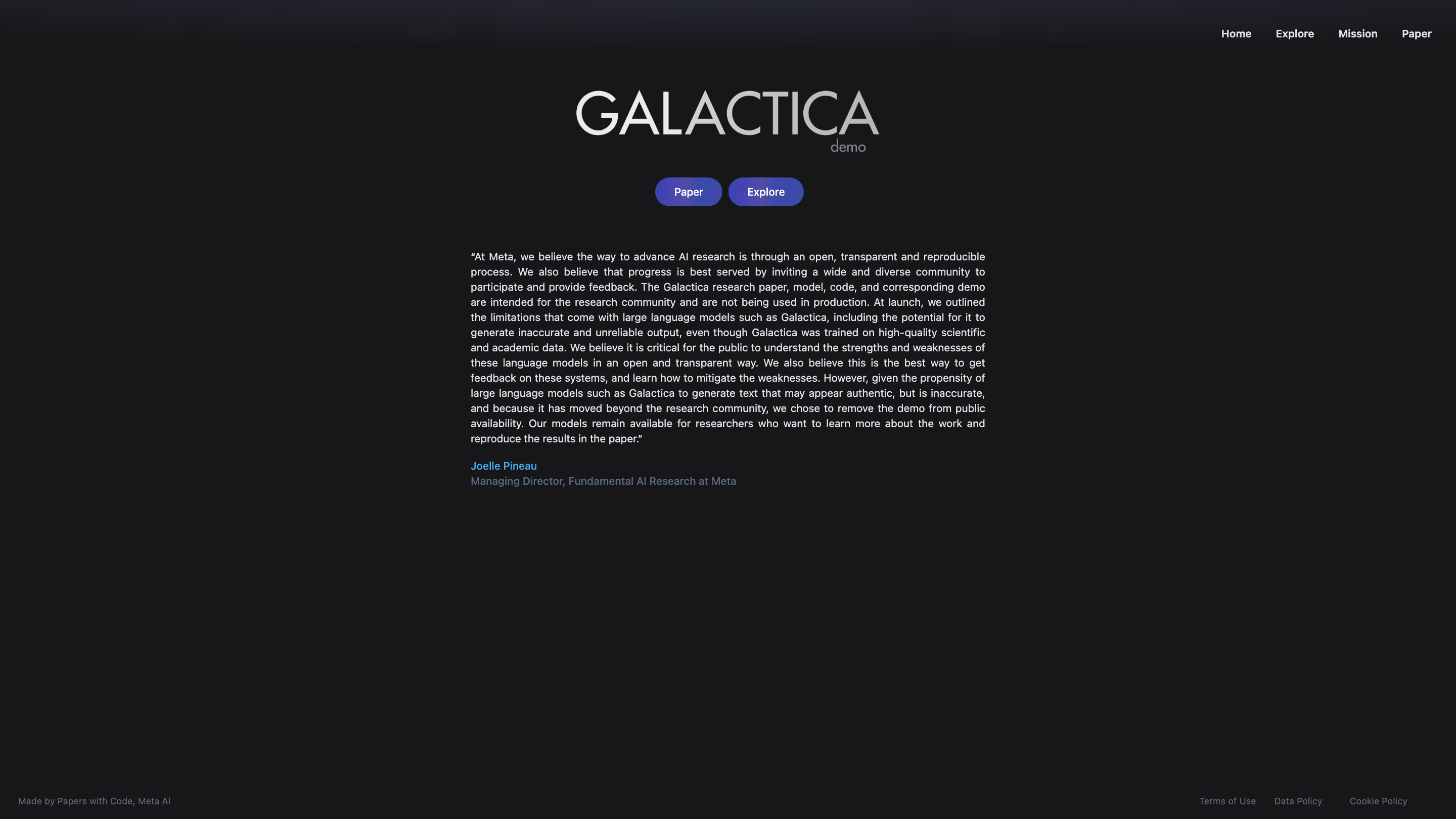Galactica Demo
Open siteIntroduction
Explore and interact with Galactica's machine learning model on Galactica Demo website.
Galactica Demo Product Information
Galactica Demo (Meta AI) Overview
Galactica is a research-oriented large language model by Meta AI designed to explore open, transparent, and reproducible AI research. The Galactica project emphasizes community participation, feedback, and reproducibility rather than production deployment. At launch, Meta highlighted known limitations of large language models (LLMs) such as generating inaccurate or unreliable outputs, despite training on high-quality scientific and academic data. The goal is to help the public understand both strengths and weaknesses of such models, gather feedback, and explore mitigation strategies. The Galactica demo was released to the research community for learning and reproduction of results but was not made available for general public usage due to accuracy concerns. The core models remain accessible to researchers who want to study the work and reproduce results from the associated paper.
How to Use Galactica (Demo) and What It Was Intended For
- The Galactica demo was intended as an educational and research-focused portal to interact with the model and study its outputs in a transparent setting.
- It was not configured for robust production use and was removed from public availability to prevent dissemination of potentially inaccurate information.
- Researchers can access model code, the research paper, and accompanying demos to reproduce experiments and better understand model behavior and evaluation.
Key Limitations and Considerations
- The model can generate text that appears authentic but is inaccurate or unverified, a common issue with large language models.
- The public demo was withdrawn to mitigate risks associated with misinformation and misinterpretation in non-research contexts.
Safety, Ethics, and Responsible Use
- Emphasis on responsible research use, transparency about limitations, and avoiding deployment scenarios that could mislead or cause harm.
- Encourages critical evaluation and reproducibility rather than relying on the model for authoritative factual outputs.
Core Features
- Open, transparent, and reproducible research-oriented design
- Public documentation including research paper, code, and demo for researchers
- Emphasis on feedback from a diverse community to identify strengths and weaknesses
- Clear communication of model limitations and potential inaccuracies
- Non-production deployment focus to prioritize safety and reliability in research contexts
